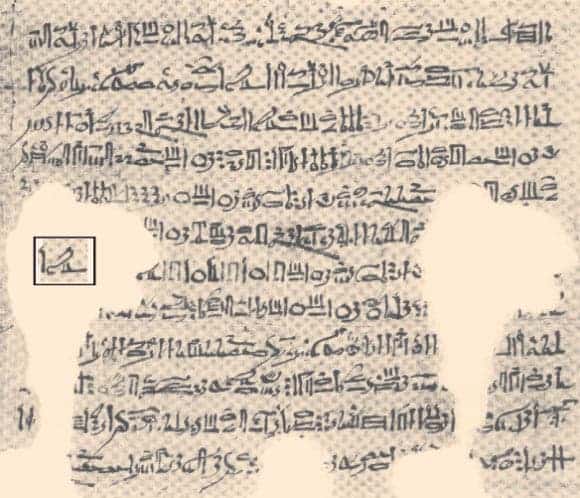Many ancient civilizations made astronomical notes, but according to researchers, this is the earliest historical document of naked eye observations on a variable star – Algol.

Variable stars are stars with a varying brightness (as seen from Earth), and they probably held a special place in Egyptian astronomy – they made careful notes on these stars. Now, more than three thousand years later, a particular papyrus could hold valuable astrophysical information.
The papyrus was acquired by the Egyptian Museum of Cairo in 1943 from an antiquities dealer. In 1966, Egyptian scientist Abd el-Mohsen Bakir published it as the Cairo Calendar No. 86637 and now, University of Helsinki researchers analyzed in more detail. Lauri Jetsu and Sebastian Porceddu said:
“Our statistical analysis leads us to argue that the mythological texts of the Cairo Calendar contain astrophysical information about Algol,” the scientists said.
The text is divided into three sections (Book I, II and III). The first Book contains 365 passages, one for each day of the 360-day Egyptian year plus five epagomenal days. The passages are quite diverse, containing mentions of religious feasts, legends and mythological stories and horoscope-type forecasts. The analysis revealed that periods of the variable star Algol (periodicity of 2.85 days) and the Moon (29.6 days) are strongly connected to the actions of deities in the calendar.
“We show that Algol was represented as Horus and thus signified both divinity and kingship,” the researchers said. “The texts describing the actions of Horus are consistent with the course of events witnessed by any naked eye observer of Algol.”
Other deities were connected with other periods.
“The period of the Moon, 29.6 days, has also been discovered in the Cairo Calendar,” they said. “We show that the actions of Seth were connected to this period, which also strongly regulated the times described as lucky for Heaven and for Earth.”
But aside from mythological and archaeological information, this could also be interesting from a purely astronomical point of view – it seems to show that the first variable star, as well as its period, was discovered much earlier than previously believed.
“In 1596, Fabricius discovered the first variable star, Mira. Holwarda determined its eleven month period 44 years later. In 1669, Montanari discovered the second variable star, Algol. Goodricke determined the 2.867 days period of Algol in 1783,” Jetsu and Porceddu said. “All these astronomical discoveries were made with naked eye. Since then, they have become milestones of natural sciences. Our statistical analysis of the Cairo Calendar confirms that all these milestones should be shifted about three millennia backwards in time,” the scientists concluded.
Journal Reference: Jetsu L. & Porceddu S. 2015. Shifting Milestones of Natural Sciences: The Ancient Egyptian Discovery of Algol’s Period Confirmed. PLoS ONE 10 (12): e0144140; doi: 10.1371/journal.pone.0144140


